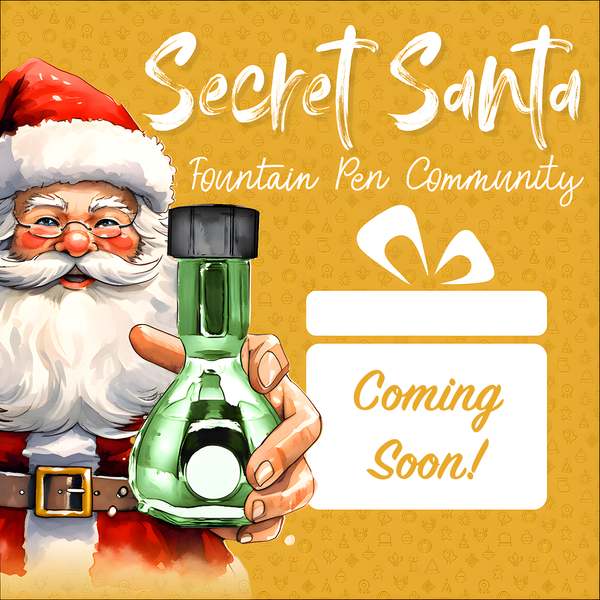Chaos on wheels: a story of mentorship
Kayo shares the story of how her mentor introduced her to fountain pens.
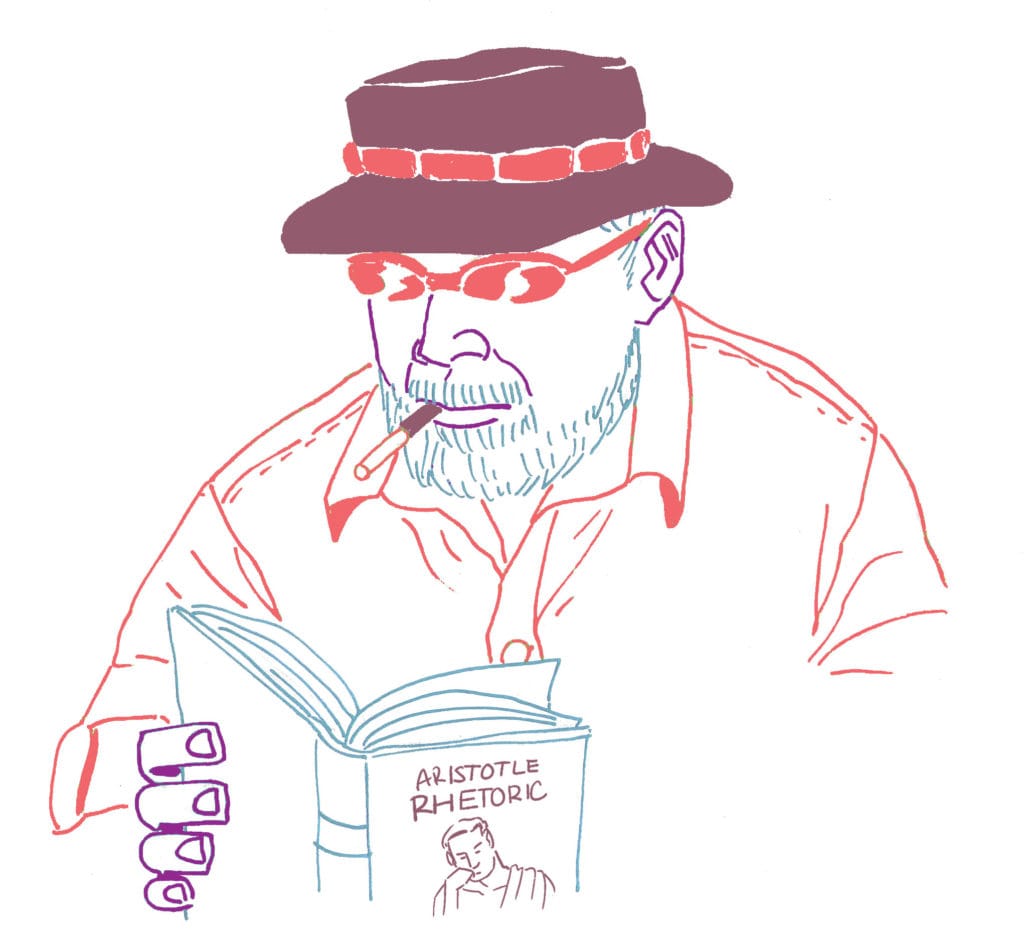
Growing up is hard, and growing up on the West Coast of Canada when your parents are thousands of miles away in Taiwan is even harder. Lucky for me, I had a champion. His name is Dr. Roman Onufrijchuk. He was also the first person to take me to a pen shop.
I met Roman in the spring of 2001 as an undergraduate student in Vancouver. He was my professor in a class called “Sociology of Leisure.” One day, I told him that I couldn’t do my presentation in class—I hadn’t done my reading and was hungover from doing cocaine the night before.
“Okay,” he said in his gruff, radio voice. “You can do your presentation next week.”
Gregarious in nature, Roman was fond of adopting “strays”—those troubled students on whatever brinks they were on. He took these directionless souls under his wings and nurtured them with infinite wisdom and generous attention. He had taken me under his wings, and I followed him around like a shadow.

Roman was a sage-like character who enjoyed retelling the Greek mythologies to any student who would listen. His usual attire was a black fisherman’s hat, a khaki button-up shirt, cargo shorts, and sporty sandals. Though he looked like he might be going fishing, he was not the type to do so. Like Aristotle’s Lyceum, Roman had his Trees Coffee, where he counseled students, the members of his so-called “tribe.” At any given time, Roman parked at a table on the spacious and shaded patio of the cafe in the business district of downtown Vancouver, a mere two blocks away from campus. In front of him on the table was a worn black plastic case filled with Gauloises cigarettes, an ashtray half-full of orange filter tips with yellow specks, a full cup of foamy caffé macchiato, and an empty porcelain cup stained with coffee sediments. He sat in his chair, slightly slouching with a cigarette between his nicotine-stained fingers in his left hand and his right hand, scribbling in a gridded notebook with a black Lamy Safari. He looked wiser than his fifty-one years.
“Give me a second,” he said when he saw me approaching his table. He put the finishing touches on his notes. A minute later, he closed his notebook and stubs out his cigarette. “What’s happening with you, Chaos on Wheels?”
I always made an appointment with him to discuss a research paper, but we always talked about whatever boy drama was ailing me first. Once that was out of the way, I'd tell him about whatever intellectual conundrum was troubling me.
“Ughhhh, I still can’t write my paper on Max Weber’s bureaucracy!” I moaned.
After listening to my shaky structure and lack of argument, he pulled out his notebook and fountain pen. “Here, check out these books from the library,” he said as he ripped a page out of his notebook and wrote down the names and titles of books for me. His handwriting was an elegant and methodical cursive, which was challenging to decipher, especially for a 20-year-old undergraduate.
There was something romantic and nostalgic about writing with a fountain pen, even in the early 2000s, before text messages became the primary mode of communication and people became addicted to their flashing screens. Writing with one felt so grown up and scholarly. I believed a fountain pen would further cement my image as a budding academic who worked part-time at a bookstore.
“Where can I get one of those?” I asked.
“At the Vancouver Pen Shop,” he said. Roman looked at his watch. “My next appointment isn’t for another hour. Do you want to go?”
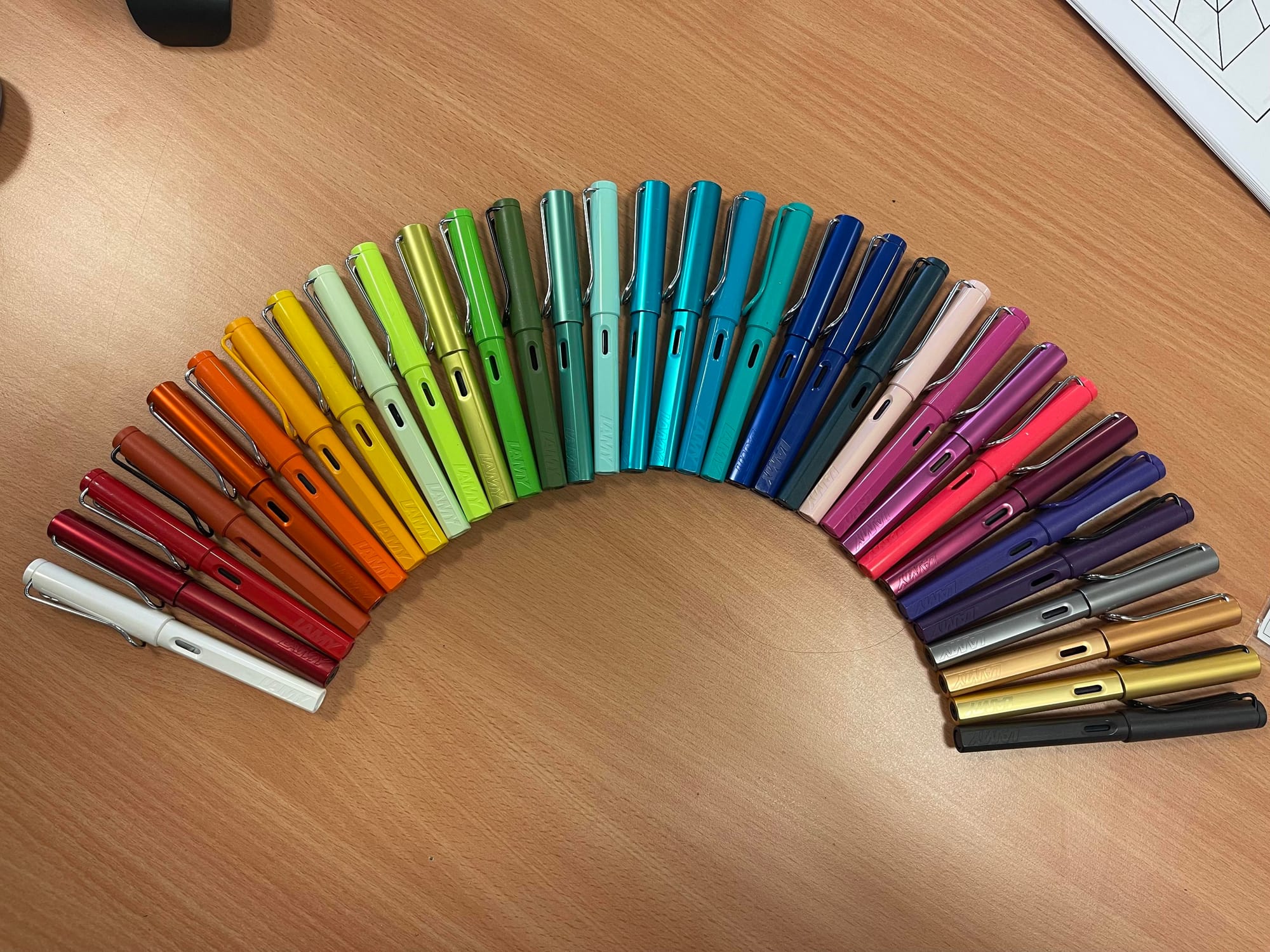
With Roman’s guidance at the pen shop, I picked out my first Lamy Safari. It was blue with a M nib. Roman always wrote in blue ink, so I’m sure my first pack of ink cartridges was blue, but I switched to black shortly after. I used sketchbooks as my journals and preferred the fine-point black Sharpie for my musings and reflections. However, at some point, I slowly switched to using blank Moleskine journals and used fountain pens exclusively, especially in graduate school.
Since then, I’ve discovered many fountain pens. Safaris are inexpensive, and their endless color selections make them fun to collect. While living and working in libraries in Dubai and Bahrain, I vacationed in Germany, Austria, and France. I bought many different colors of Lamy Safari—from teal to pink, yellow, and red.
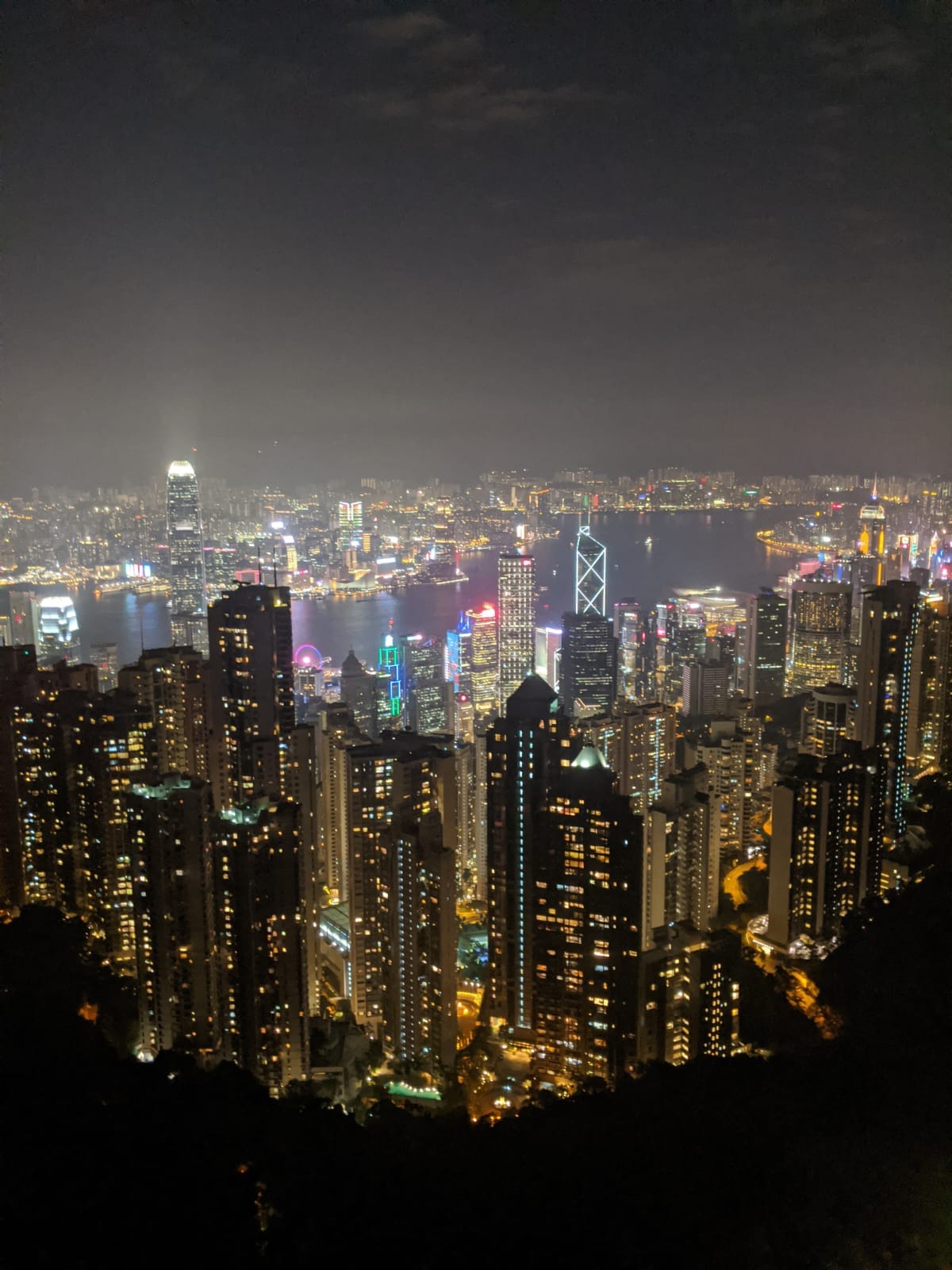
I moved to Hong Kong in 2012. Roman asked me if I would keep my eyes out for Namiki fountain pens—the gorgeous gold-nibbed fountain pens with a lacquered body, handmade in Japan. They are incredibly pricey in Canada, and he thought they might cost less in Asia. I aspired to buy one for Roman—I wouldn’t have become a fully functioning adult with a respectable career without his guidance. However, I never had the chance—he died in 2015 after years of struggling with his health. His habit of drinking sixteen cups of macchiato and smoking two packs of cigarettes a day had finally caught up to him.
I grieved Roman by going pen shopping. The Namiki pens were more than I wanted to spend on a pen for myself, so I searched for a new one. My handwriting also evolved as I aged, and I found myself drawn to finer nibs. I discovered the Kaweco Brass Sport, which I enjoyed until I found its smaller cousin, the copper Kaweco Liliput, in F. The Liliput was my favorite pen for many years, and I used the Kaweco Sunrise Orange with it. It was compact and sleek, and I liked the extra weight the copper provided. The patina it developed over the years made it more personal and unique—I love that pen.

When I moved to Taiwan in 2021, I met @paradoxmo, one of this blog’s moderators, who helped to broaden my fountain pen horizons. I love my Liliput, but I also decided I needed something different. I obsessively sought out my “it” pen for the first two-and-a-half years in Taiwan. I tried Sailors and Pelikans, Diplomats and Platinum, Sheaffer, and Pilot—countless penmakers with various nibs. @paradoxmo also introduced me to a host of replicas from various Chinese penmakers. Ultimately, I found a second-hand Pilot Capless in matte black. Its metallic body is the perfect weight in my hand, and its F gold nib provides the ideal flow.
I resigned from my librarian career to dedicate myself to my writing. I use my fountain pens almost daily as I take notes in my notebook and write my first drafts. Currently in my pen roll: Pilot Capless in F, a vintage Sheaffer Targa 1020 Imperial Brass in F, and a silver Diplomat Aero also in F. I also keep a Caran d’Ache 0.7mm mechanical pencil and a Kaweco Art Sport Amecitrin ballpoint pen.
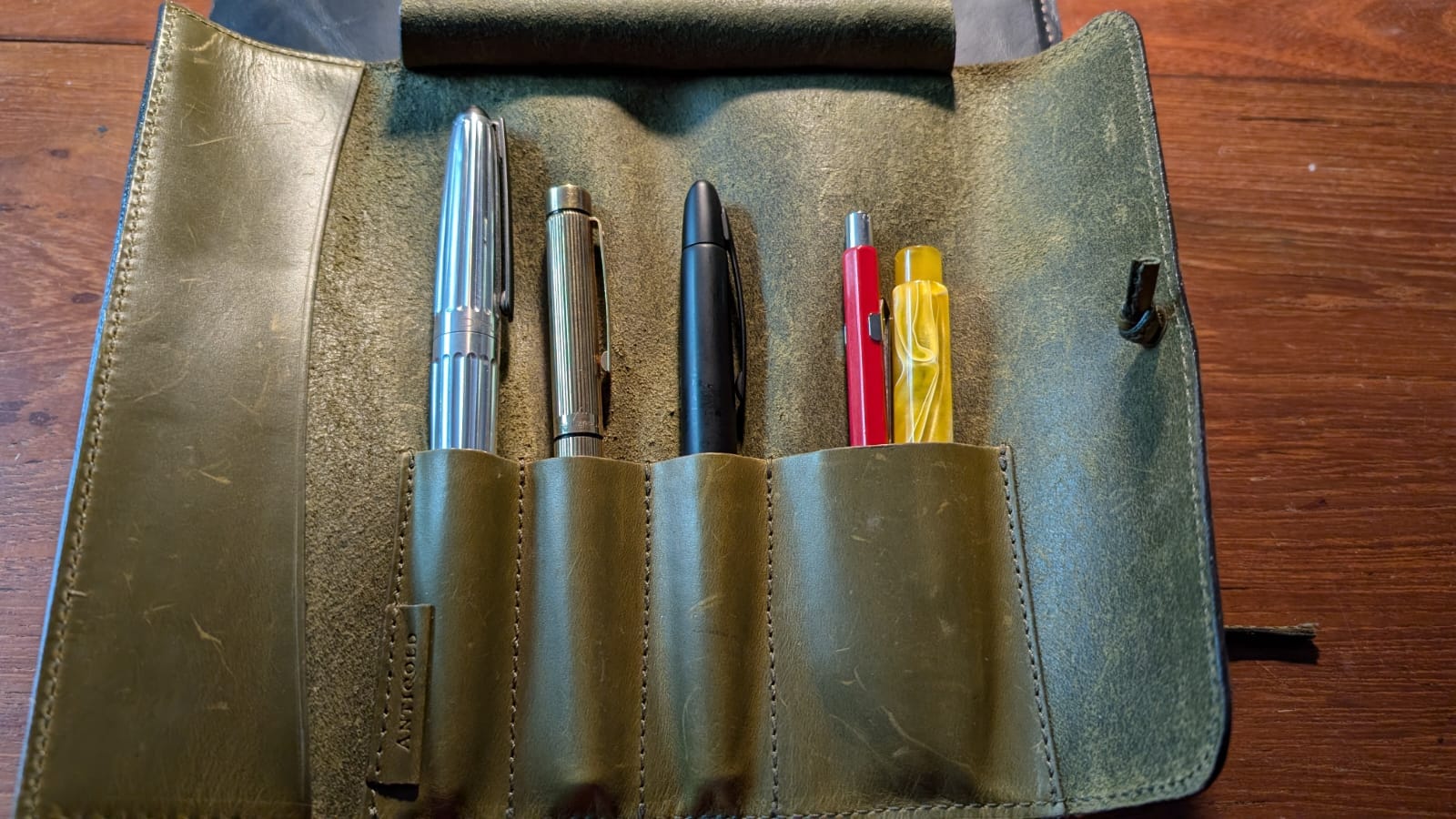
Roman gave me practical advice when I was young: “Don’t burn any bridges.” I still live by this—no matter how miserable I was at a job or how much I disliked someone, I always parted ways on good terms.
Another good one: “Never go to bed with someone who’s got more problems than you.” – “How do I know he’s got more problems than me?” I whined. “You listen and observe, kiddo,” he said.
My ability to listen, observe, and pay attention makes me a writer. In addition to all his helpful tips on life, Roman taught me that writing and putting thoughts on paper is an intentional process. Using a fountain pen to write is a significant component of my process. When I pick up a pen for work at the beginning of the day, I think of my beloved mentor.
I was lucky to have Roman to show me the way—but now, it’s my turn to give back to the universe for the care and love Roman bestowed on me. Throughout my career as a librarian, I’ve accumulated a group of young people worldwide, former students and junior librarians, who now reach out to me when they need a champion. As the older, wiser person, I happily play my part, imparting my wisdom on career, love, and everything else in between. And—when they ask—I show them my fountain pens.
You can read more of Kayo’s writing at her Substack.



